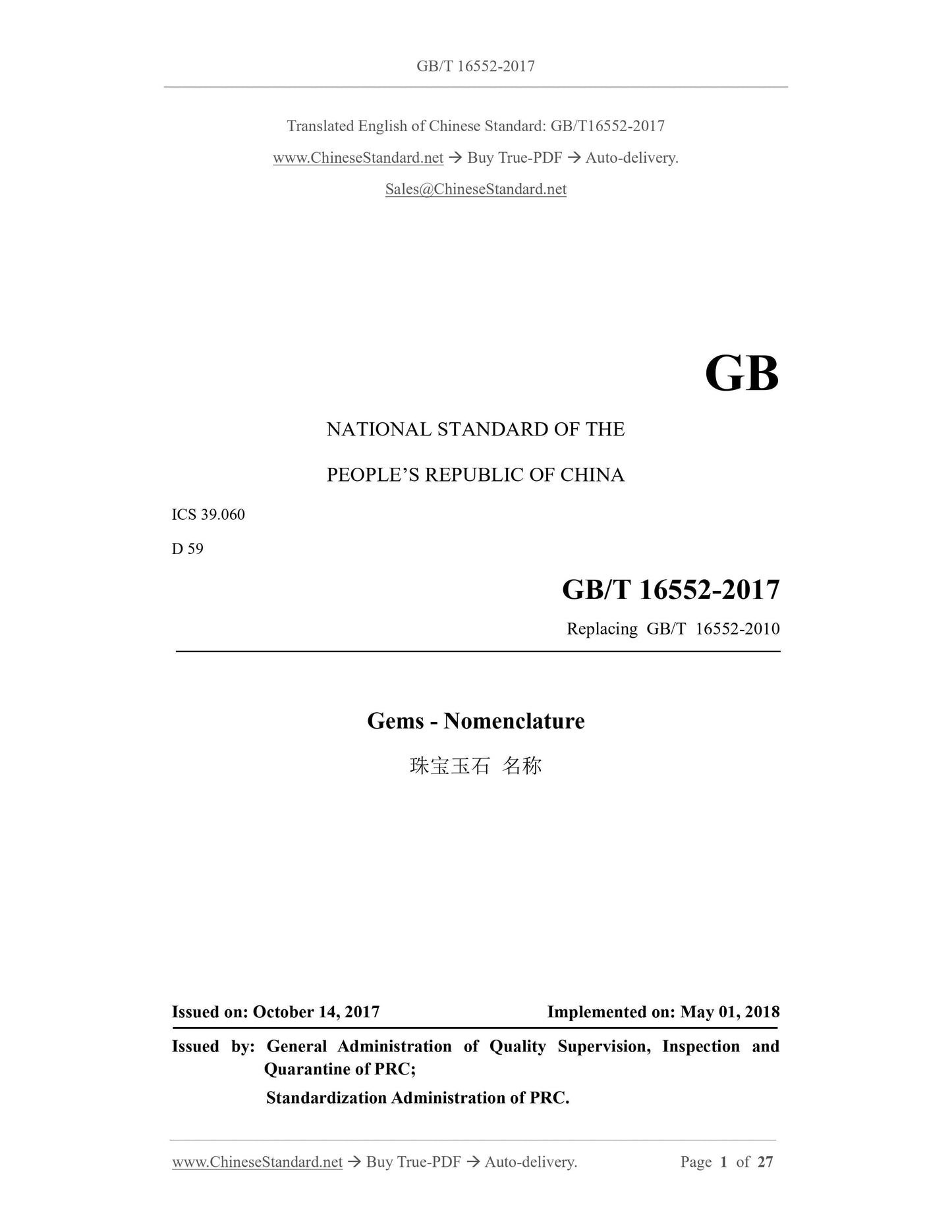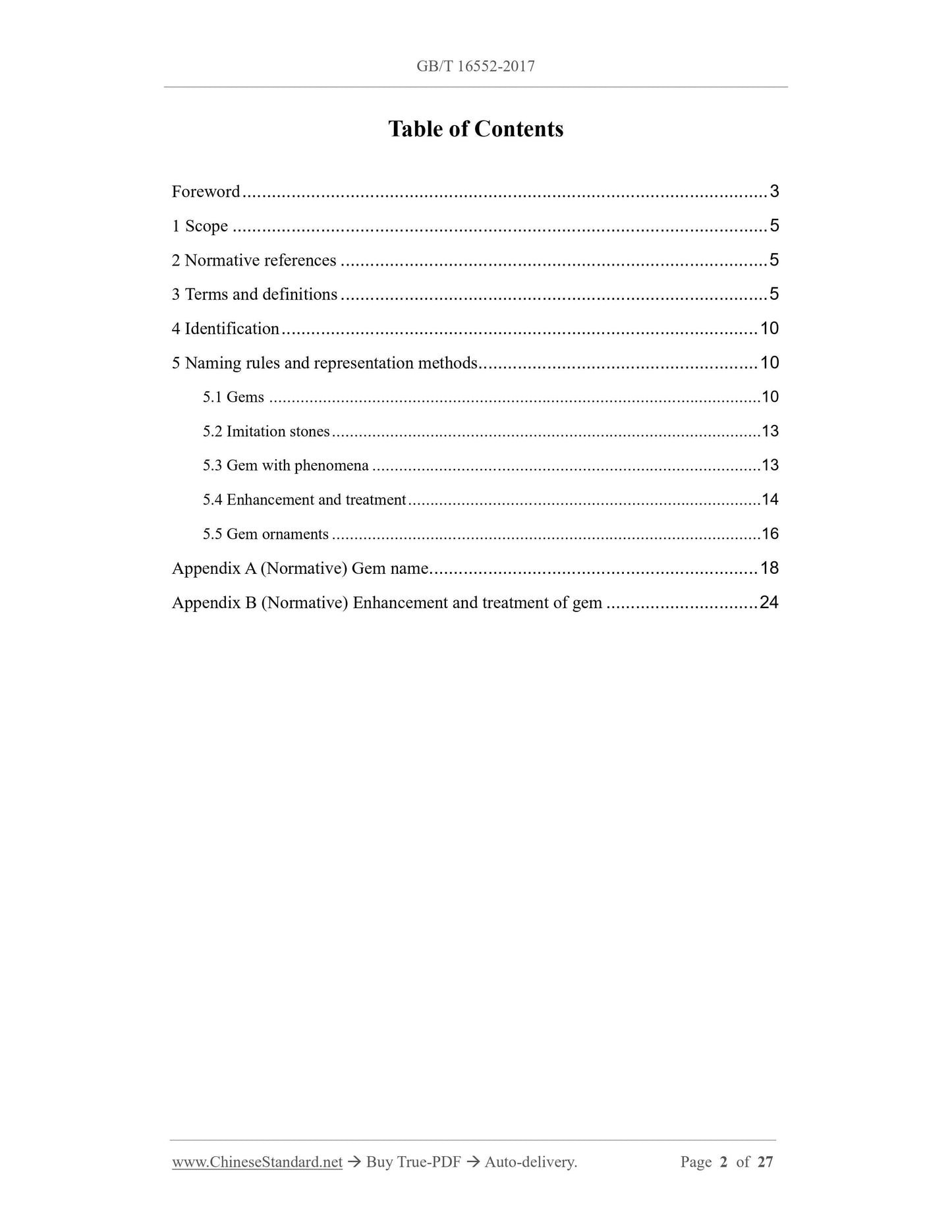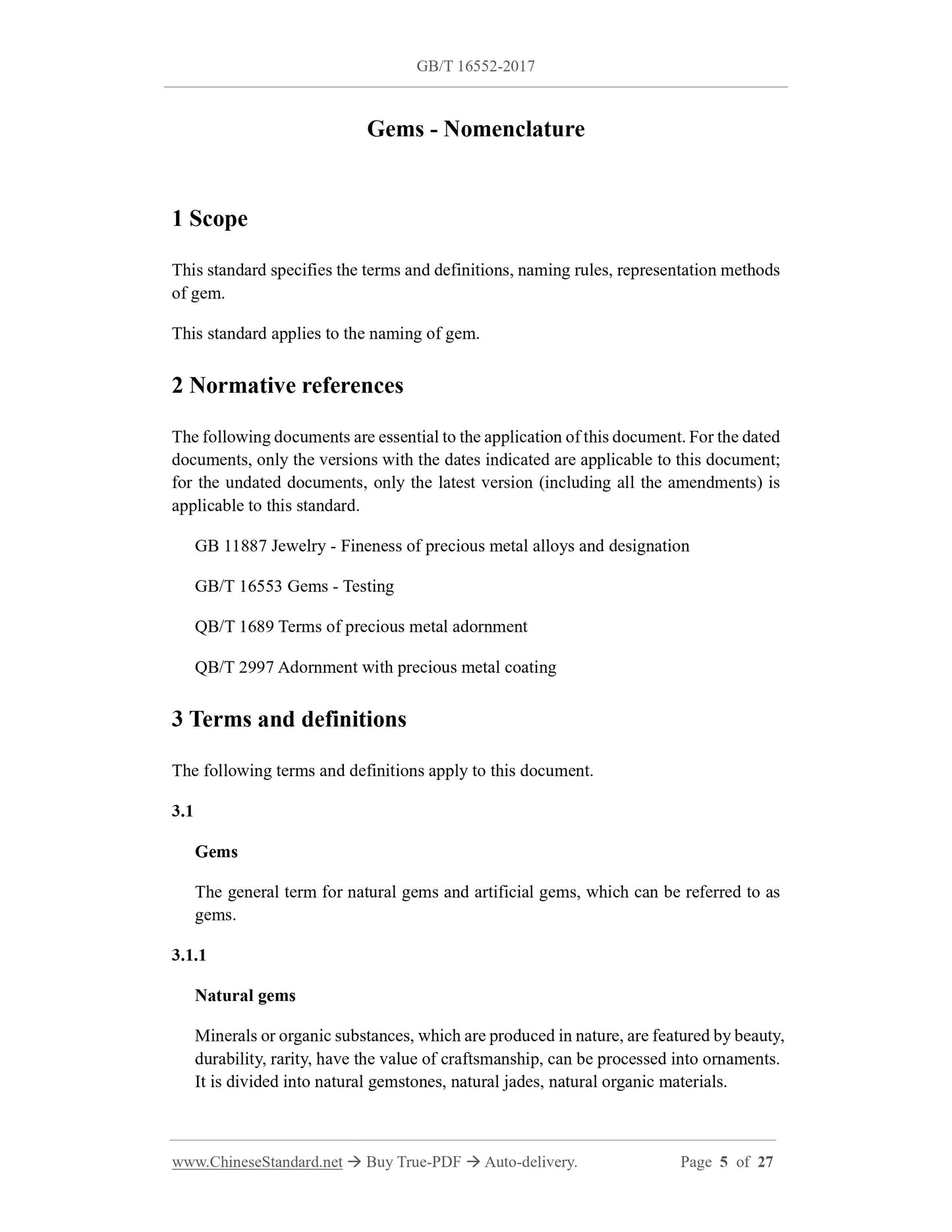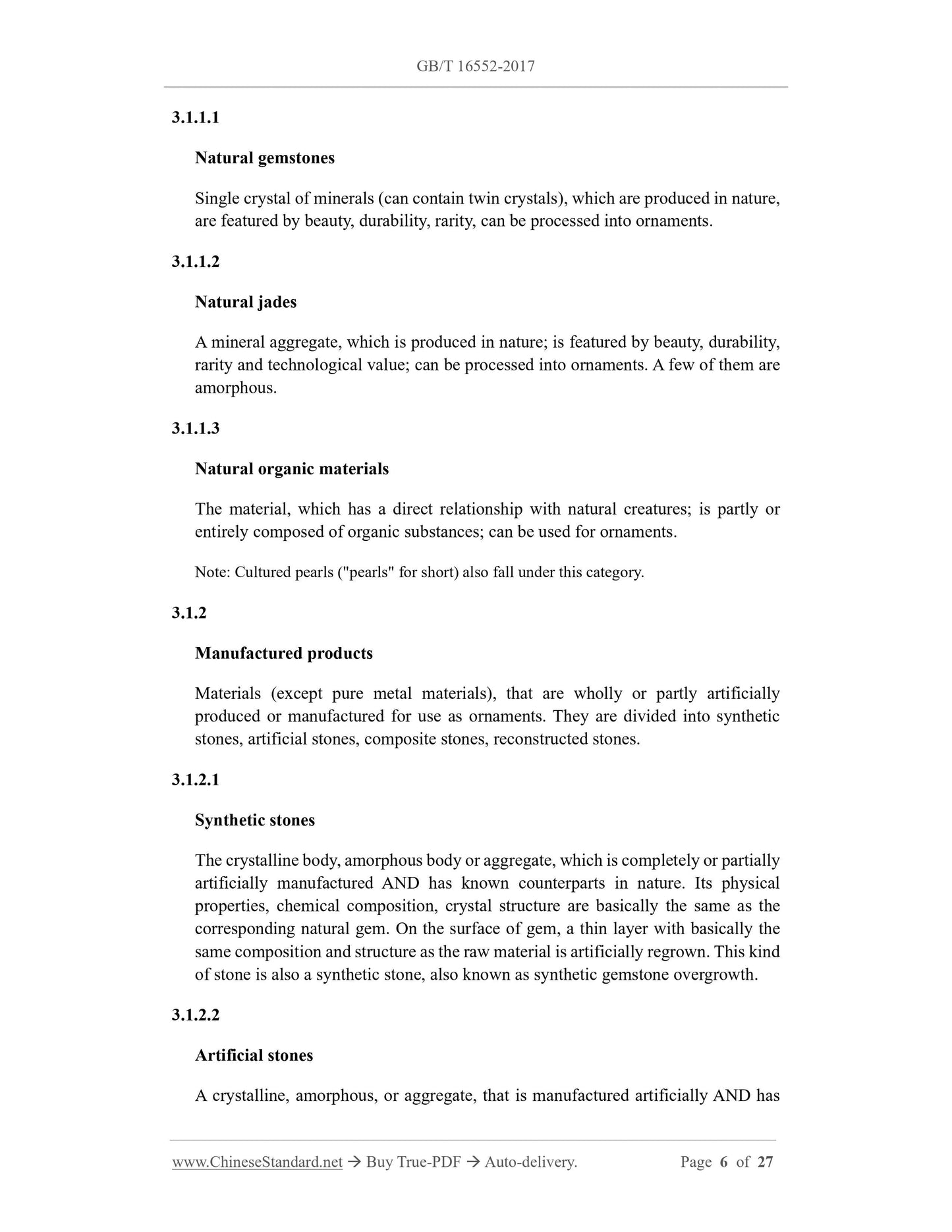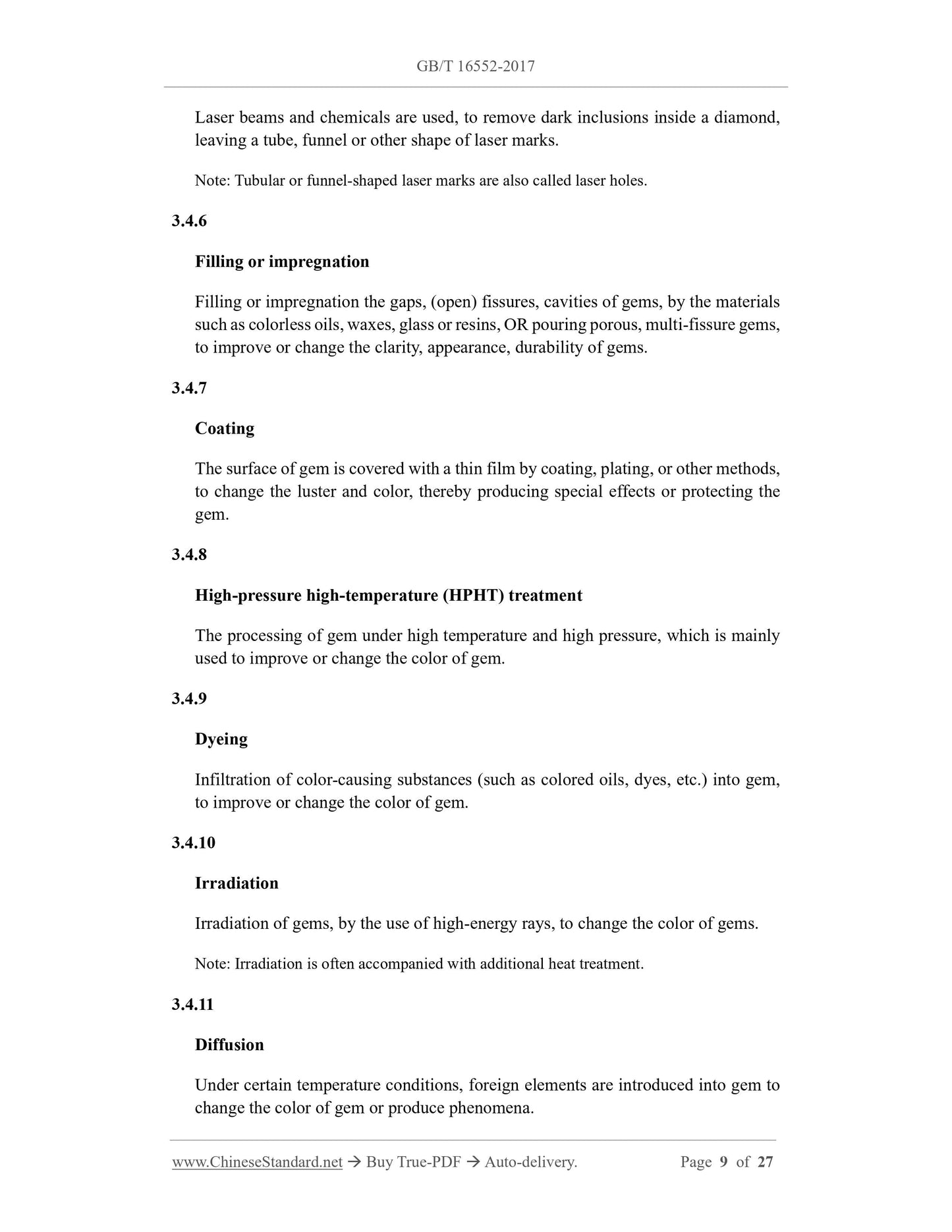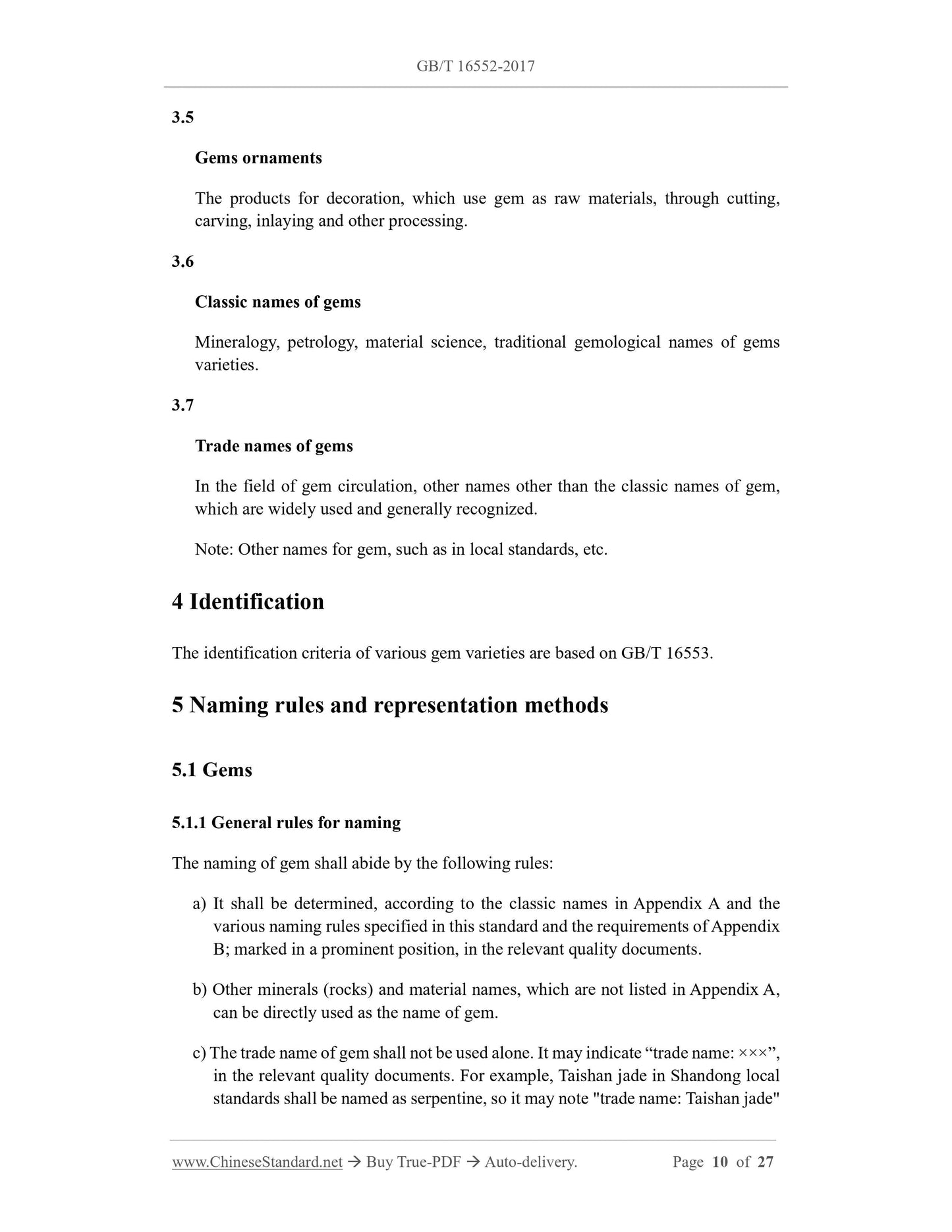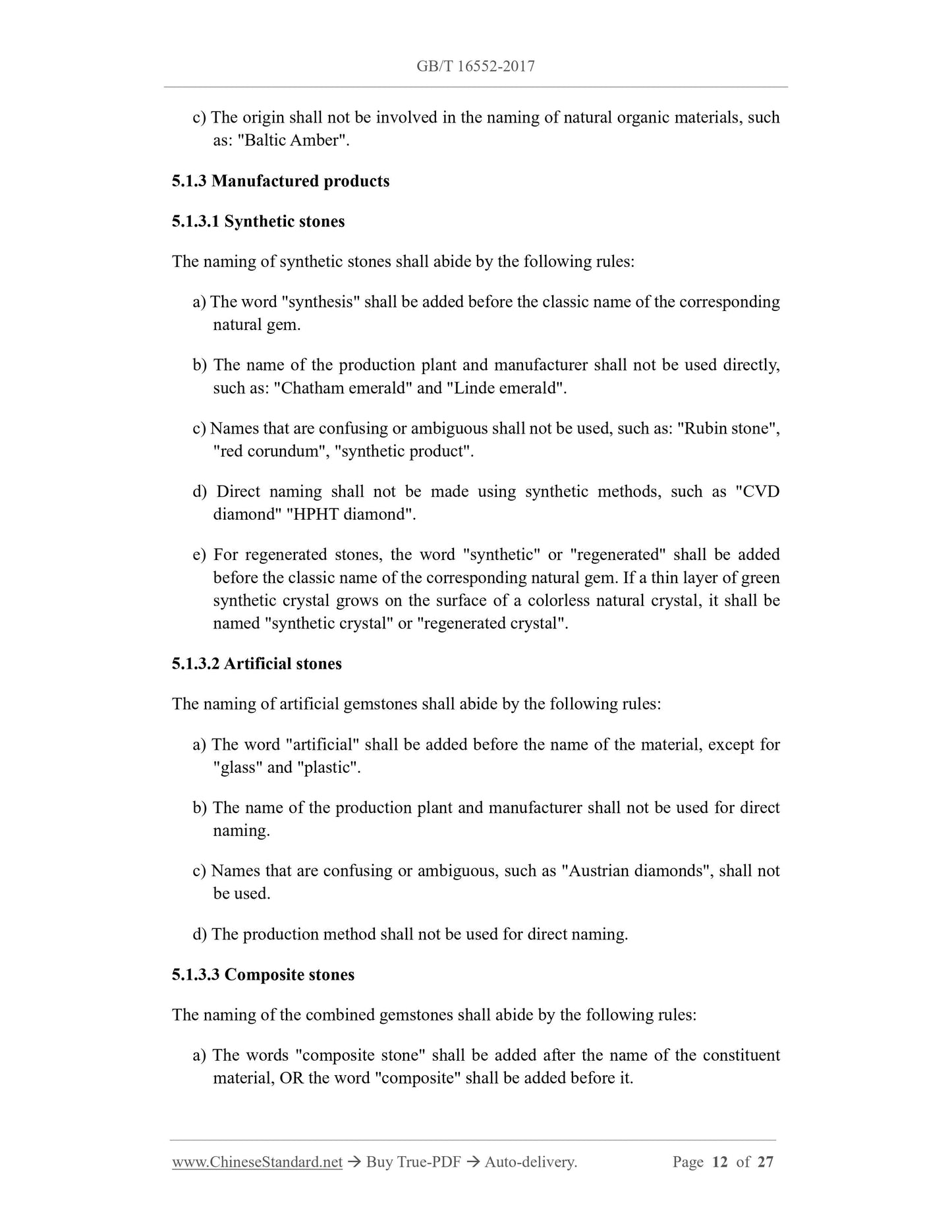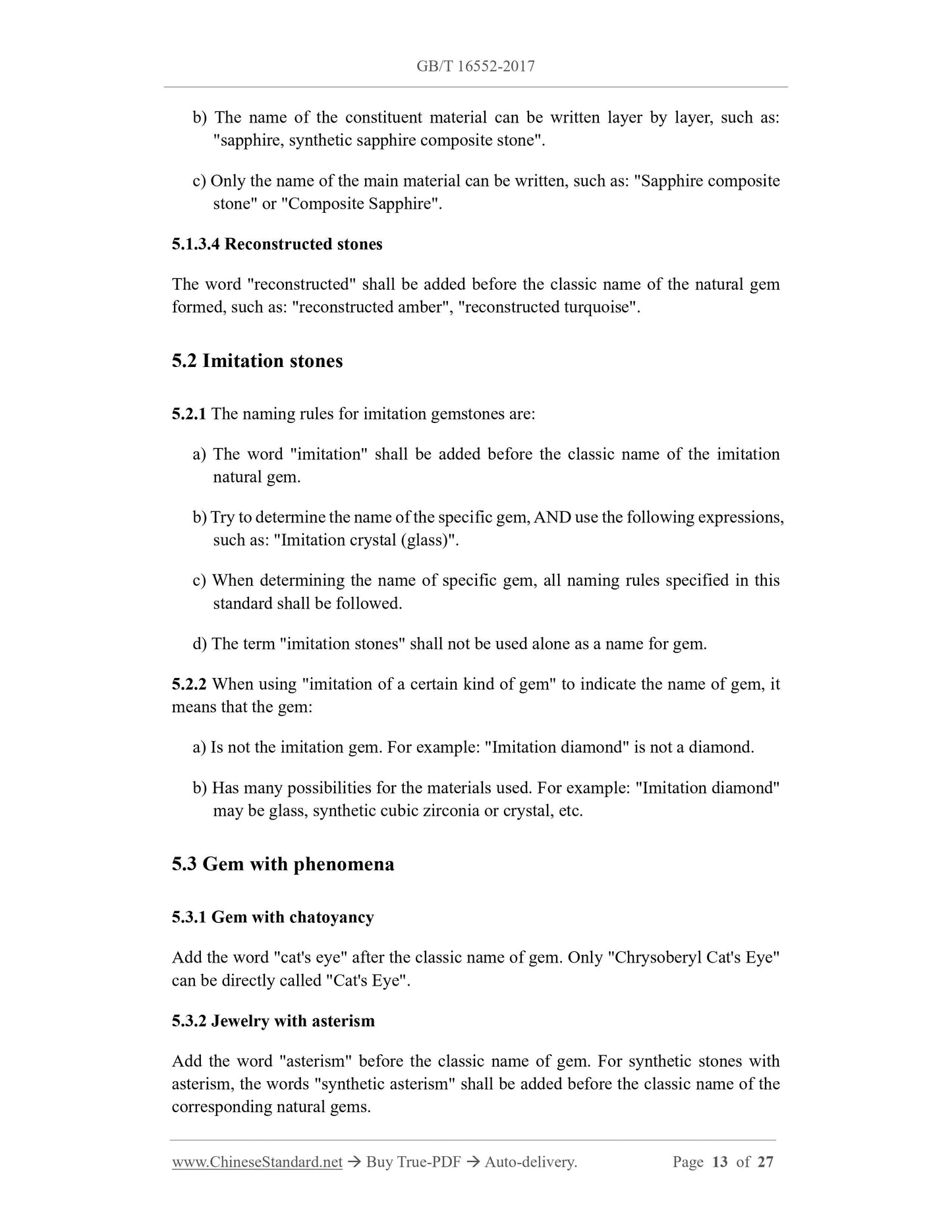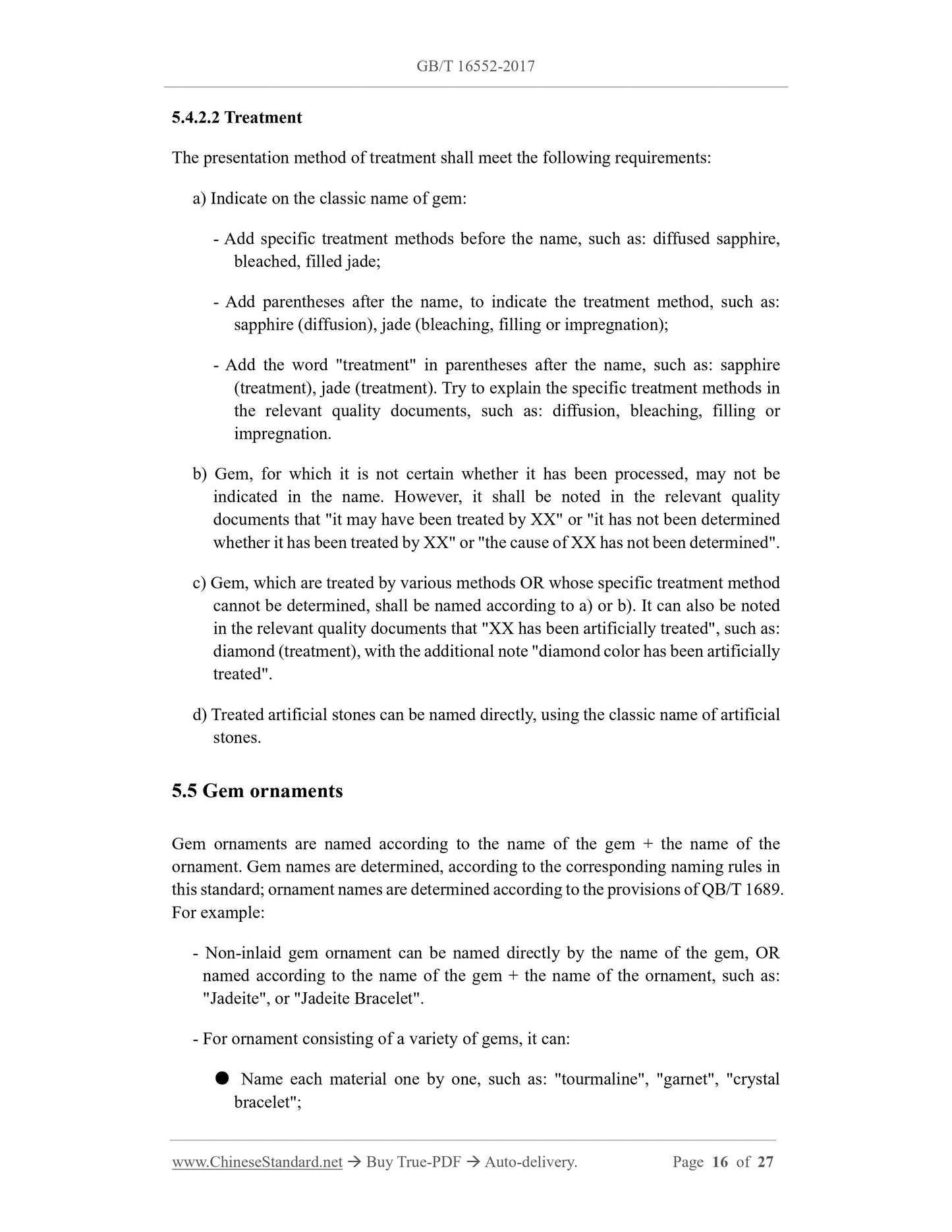1
/
of
9
www.ChineseStandard.us -- Field Test Asia Pte. Ltd.
GB/T 16552-2017 English PDF (GB/T16552-2017)
GB/T 16552-2017 English PDF (GB/T16552-2017)
Regular price
$185.00
Regular price
Sale price
$185.00
Unit price
/
per
Shipping calculated at checkout.
Couldn't load pickup availability
GB/T 16552-2017: Gems - Nomenclature
Delivery: 9 seconds. Download (and Email) true-PDF + Invoice.Get Quotation: Click GB/T 16552-2017 (Self-service in 1-minute)
Newer / historical versions: GB/T 16552-2017
Preview True-PDF
Scope
This standard specifies the terms and definitions, naming rules, representation methodsof gem.
This standard applies to the naming of gem.
Basic Data
| Standard ID | GB/T 16552-2017 (GB/T16552-2017) |
| Description (Translated English) | Gems - Nomenclature |
| Sector / Industry | National Standard (Recommended) |
| Classification of Chinese Standard | D59 |
| Classification of International Standard | 39.060 |
| Word Count Estimation | 22,274 |
| Date of Issue | 2017-10-14 |
| Date of Implementation | 2018-05-01 |
| Issuing agency(ies) | General Administration of Quality Supervision, Inspection and Quarantine of the People's Republic of China, Standardization Administration of the People's Republic of China |
Share
